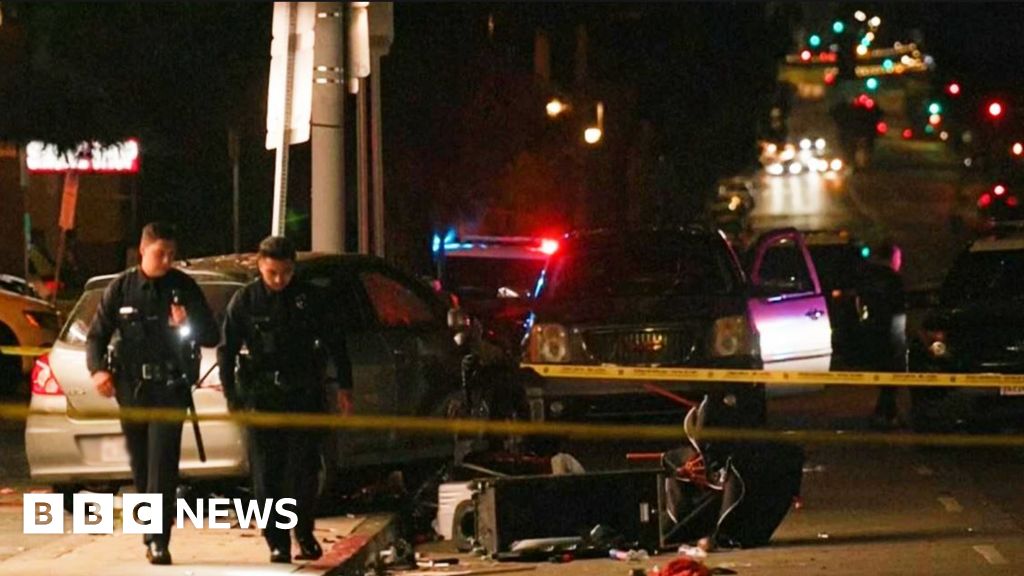Tragedy at Los Angeles Music Venue: Lessons in Safety and Conflict Resolution
#tragedy #los_angeles #music_venue #safety #conflict_resolution

Introduction
A night of music and celebration turned into chaos and tragedy in Los Angeles, as a driver hit a crowd of people after a dispute with concert-goers. The incident occurred outside a music venue and resulted in 30 people being injured.
Key Details
According to the LAPD, the driver had been involved in a fight inside the venue before getting into his car and driving into the group of people on the sidewalk. The driver was then shot by police after refusing to comply with their demands to stop.
This shocking event has left the community in shock and raised questions about the safety and security measures at music venues. It also highlights the dangers of confrontations escalating to the point of violence and causing harm to innocent bystanders.
Impact
This incident serves as a reminder for event organizers and security personnel to remain vigilant and take necessary precautions to prevent such incidents from occurring. It also highlights the importance of de-escalation techniques and proper handling of conflicts to avoid them spiraling out of control. It is a tragic reminder of the consequences of violence and the need for responsible and peaceful behavior in public spaces.
About the Organizations Mentioned
LAPD
The **Los Angeles Police Department (LAPD)** is the primary law enforcement agency serving the city of Los Angeles, California, and is the third-largest municipal police department in the United States, with approximately 8,832 sworn officers and 3,000 civilian staff[5]. It operates out of its headquarters in the Civic Center district and is organized into multiple bureaus and specialized units, including 21 community stations grouped in four bureaus, a Detective Bureau, and special divisions such as the Metropolitan Division, Air Support Division, and Major Crimes Division[5][4]. Founded in the late 19th century, the LAPD has evolved into a complex organization that addresses a wide range of public safety needs, including crime reduction, community policing, and counterterrorism. It employs advanced technology and strategic planning to manage law enforcement operations across a sprawling urban environment[1][4]. The department's staffing levels are carefully managed, with recent budgets proposing around 8,600 officers, balancing hiring with attrition and operational funding constraints. However, budget cuts, especially to overtime and certain operational expenses, have impacted patrol coverage and specialized enforcement capacity[2]. Historically, the LAPD has faced significant challenges related to police misconduct, civil rights violations, and issues of accountability. These problems led to a landmark 2001 consent decree with the U.S. Department of Justice, implementing reforms that were lifted in 2013 after improvements in policing practices and oversight[5]. More recently, controversies have included policies on collecting personal information from citizens, prompting policy updates to reinforce privacy protections[5]. Notable for its size, organizational structure, and role in public safety innovation, the LAPD continues to balance operational demands with community engagement and reform efforts. Its organizational chart reflects a detailed hierarchy with divisions dedicated to inclusion, risk management, and constitutional policing, emphasizing a multifaceted approach to law enforcement in one of America’s largest and most diverse cities[1].









